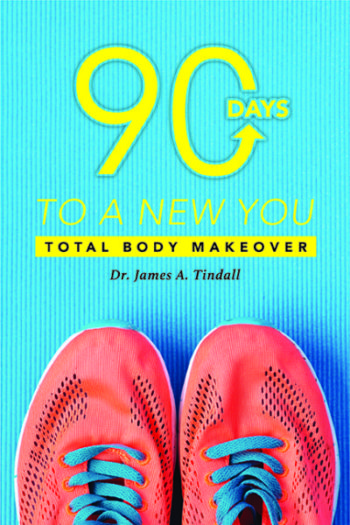Fruit and Yogurt Parfaits
• You should eat plain yogurt that contains only 11 grams of sugar, which is all naturally occurring (not added).
• Vanilla yogurt (8-ounce serving) in contrast can have upwards of 34 grams of sugar. About 2/3 of that sugar (23 grams) is generally added!
Granola is commonly added to parfaits and will contains at least another six grams of added sugar. This is a lot of added sugar. The recommended amount per day is 25 grams (6 teaspoons) for women and 37.5 grams (9 teaspoons) per day for men.
Granola cereal and granola bars
Advertisement: Cytocharge (click on photo for more info)
 Granola Cereal
Granola Cereal
Generally, 1/2 cup of granola cereal has 12 grams of sugar and 300 calories.
If instead you consume ½ cup of whole, uncooked oats, you would eat only 0.4 grams of sugar and 104 calories. This means that almost all the sugar in granola is added. Thus, it pays to read the food-content labels.
Granola Bars
On average, a granola bar has 12.4 grams of sugar and 113 calories.
• Almost half of those calories come from sugar.
• 12.4 grams of sugar x 4 calories per gram is 49.6 calories of sugar
Thus, in terms of calories of sugar, women should have about 100 and men about 150 calories from sugar each day. And, remember what Dr. Tindall has said, “Sugar is the enemy of weight loss.!” One of the additional problems with common granola bar additions is the included honey, chocolate, dried cranberries, maple, brown sugar, and other sugary ingredients. This spikes the sugar calories even more.
Juice
Eat fresh fruit instead of fruit juice, which has less calories and less sugar.
• A 15.2 ounce bottle of grape juice can have 72 grams of sugar, some from added sugar.
• In contrast, one cup of grapes has 23 grams of sugar, and it’s all naturally occurring.
Even light (or lite) juices contain a lot of added sugar. The first two ingredients are oftentimes water and sugar. Another way to combat the sugar from juices is to pour ½ juice to ½ water in proportion. This limits the sweet taste by limiting the sugar and calories from it.
Oatmeal
Do you eat flavored oatmeal, (for example, ‘apples and cinnamon’)? If so, you’re probably getting as much added sugar as from granola.
Instead of brown sugar or other sweetener, add your own fresh apple slices, ground cinnamon, or other fruit to plain oatmeal for a healthier breakfast and no added sugar. It’s always healthier to go natural with a food like whole oat cereal than sugary corn flakes or similar.
Smoothies
Some smoothies contain as much as 80-90 grams of sugar! This is because of the common ingredients that often include:
• Added sugar and/or syrup
• Flavored yogurt or frozen yogurt
• Ice cream or sorbet
• Juice
Fresh fruit is always the best option for making smoothies and being liquid, a smoothie digests quickly and can be a booster for losing weight. However, you need to avoid all the added sugar from the syrup, yogurt, juice, concentrates, and/or ice cream mixed in with the fruit. Instead, try mixing protein powder and milk into your smoothie.
Salads
We should all eat more salads, however, if you order a salad to cut calories, you may be surprised to learn that many salads have more than 1,000 calories! Why? Because of the common ingredients, which typically include:
• Creamy ranch dressing that can add another 250-300 calories.
• Santa Fe chicken salad without dressing can be as much as 900 calories.
• Tostada salad with chicken, but without dressing can be about 1500 calories.
So, stick with basic green salads and order the dressing on the side so you can put it on to taste.
Tuna salad, chicken salad, and egg salad
Most of us love a good tuna or chicken salad. However, it is not the meat, cheese or even eggs in the salad that causes the problem. The real problem, like too much sugar above, is the added calories from fat from mayonnaise. As an example, every ounce (two tablespoons) of mayonnaise has 180 calories. Generally:
• A tuna sandwich (5 oz.) has 679 calories
• A large or overstuffed tuna sandwich (7 oz.) has 771 calories
• A common foot long tuna sandwich has 940 calories (45% from fat and 38% from carbs).
You should re-assess what foods you believe are healthy and delve into the nutrition facts of each. It’s always best to prepare your own food. Have a happy and healthy day.
]]>Advertisement: Rolex (click on photo for more info)
 Circuit training means alternating between exercises with little to no rest between each exercise. In other words, you may do a leg curl machine and immediately move to the next exercise, which focuses on a different muscle group without stopping for rest between exercises. The reason for this is that while you worked legs on one exercise, you will likely be doing something like a incline-press machine on the next thus, you are working completely separate muscle groups, which allows one muscle group to recover while you work the next. In this manner, circuit training is a good and generally safe way to build your foundation and increase your intensity.
Circuit training means alternating between exercises with little to no rest between each exercise. In other words, you may do a leg curl machine and immediately move to the next exercise, which focuses on a different muscle group without stopping for rest between exercises. The reason for this is that while you worked legs on one exercise, you will likely be doing something like a incline-press machine on the next thus, you are working completely separate muscle groups, which allows one muscle group to recover while you work the next. In this manner, circuit training is a good and generally safe way to build your foundation and increase your intensity.
Therefore, in circuit training, you may alternate between various strength-training exercises or strength-training exercises and cardiovascular (‘cardio’) exercise. If you always do circuit training, make sure to start on different machines and go to machines not in order so that your body does not get too accustomed to the same workout routine and so that you do not get bored with it either. Generally, for the first couple of weeks it’s okay to go through the circuit as it is arranged. However, after two weeks, you need to mix it up such as go in reverse order and after that do the machines in randomized order. However, the latter may be difficult when the gym is crowded.
Strength-training exercises:
• Within a circuit, strength training exercises generally last 30 – 60 seconds (bear in mind these are anerobic exercises).
• They can be done using machines, resistance bands, your own body weight, free weights (dumbbells), etc.
Cardiovascular exercises:
• Within a circuit, cardiovascular exercises generally last from 30 seconds – 2 minutes (bear in mind these are aerobic exercises).
• They can include any exercise that noticeably increases both your breathing and heart rate. As an example, jogging in place, jumping jacks, jump rope, stationary bike, etc.
Sample upper body circuit (with cardio) – beginner:
• Bicep curls – dumbbells and bench
• 30 seconds jogging in place (high step or march if jogging is too much exertion for your fitness level)
• Chest press – dumbbells and bench
• 30 seconds of jumping jacks
• Shoulder raise – dumbbells or medicine ball
• 30 seconds jogging in place
• Overhead triceps extension– dumbbell and stability ball
• 30 seconds of jumping jacks.
• Single arm row – dumbbell and bench
• 30 seconds of body squats – no weight
You can create your own circuit at home or at the gym, or you can take a circuit training class. The latter is a fun group exercise and you’ll often make new friends. If you take a class, the exercises are typically set up as stations and you move to the next station when the instructor tells you.
]]>Advertisement: Amazon (click on photo for more info)

There have been literally thousands of studies on weight lost with many reporting that those who ate between 1,700 to 1,800 calories per day lost on average of 73 pounds and were able to keep it off. Why? Because being persistent with this regimen changed their eating habits – something diets do not do!
Let’s look at it this way: the rule of thumb is that you need to burn 3,500 to lose one pound of body weight. Suppose you are Sam and need 2,000 calories per day to maintain a body weight of 180 pounds. Theoretically, if you ate 2,000 calories per day, you would need to exercise to lose more weight. Thus, a combination of Sam eating 1,800 calories per day, which is 200 calories short of what he needs and exercising at an average level of 20-30 minutes per day would burn about 300 calories, putting him at a 500 calorie per day deficit. This would mean that he would lose about one pound per week. A healthy weight loss is about 1-3 pounds per week, not more.
Studies show also that people generally underestimate their calorie consumption by 20-30%. Thus, when people believe they are eating about 1400 calories per day, they are really eating about 1600-1800 calories per day.
Women
Women are generally smaller than men and thus, need less calories. This is important to realize. Typically, women have less dense muscles and overall, smaller muscles compared to men. This is not a gender biased assumption but based on basic facts. However, there are exceptions and you should know if you are one of them. Because of this, women generally need less calories than men. Would it surprise you to know that a great number and men and women consume about the same number of daily calories? Would it also surprise you to know that the average calorie intake in the U.S. is 4,000 calories per day? This is almost twice the needed calories.
Men
The average man should consume about 2050 – 2250 calories a day. This assumes a height of 5 ft 10 inches and average weight of 185 pounds. Did you know that at 5’ 10” that a man is generally 7 lbs per inch in body weight after that height and women at an average height of 5’ 5’ weight 125 pounds and add 5 lbs per inch for every inch after 5 ft in height. This is a good way to approximate how much you should weigh. However, please not that is you have larger bones or greater muscle density, this will not be accurate as it is for the ‘average.’
General ways to reduce calories and lose weight:
• Count calories.
• Count fat grams.
• Focus on portion control. Eat what you want, but limit quantity.
• Limit certain foods or types of food.
What is the amount of fat, protein and carbohydrates you should have?
On average, as a more active person the following is a good guide for daily nutrition:
• 25% of calories from fat.
• 25% of calories from protein.
• 50% of calories from carbohydrates.
If you are vegan, focus more on legumes for more plant protein, as well as cheese, eggs, yogurt, butter, and other foods for fat and protein.
As a note, as an omnivore, you don’t have to give up carbohydrates to lose weight. Focus on the type of carbohydrates you are eating. This mean you should choose more whole grains, leafy green vegetables, etc. and choose fewer refined grains. Limit sweets such as cookies, cakes, and other sources of refined grains.
]]>Advertisement: Louis Vuitton (click on photo for more info)

The metabolic rate is traditionally assessed using either direct or indirect calorimetry. This 30-minute screening uses indirect calorimetry which determines metabolic rate from the oxygen consumption of an individual. Generally, such a screening includes a 15-minute consultation with a health/wellness specialist at a cost of about $50.
As you read above about Kathie, weight management is a matter of simple arithmetic — balancing the number of calories taken in against the number of calories used. In other words, it’s about energy in minus energy out. If you know how many calories you’re burning, you’ll know how many calories you need to lose, maintain or gain weight.
In Summary
Your resting metabolism is the amount of energy (calories) your body needs each day to perform essential functions such as maintaining your:
• Breathing
• Body temperature
• Heart beat
• Brain function
• Liver function
• Kidney function, etc.
In other words, resting metabolism is the minimum number of calories your body needs each day to function efficiently, even if you rested in bed all day, which is how the number of calories was determined above, i.e., a state of rest with no exercise other than normal movements in the office, at home, etc. Resting metabolism may also be referred to as resting metabolic rate (RMR) or resting energy expenditure (REE).
]]>